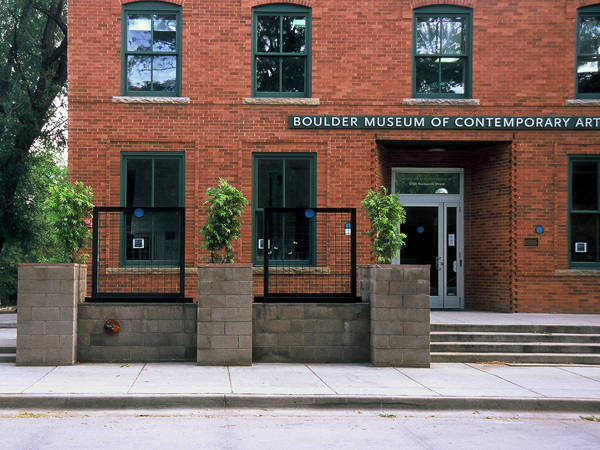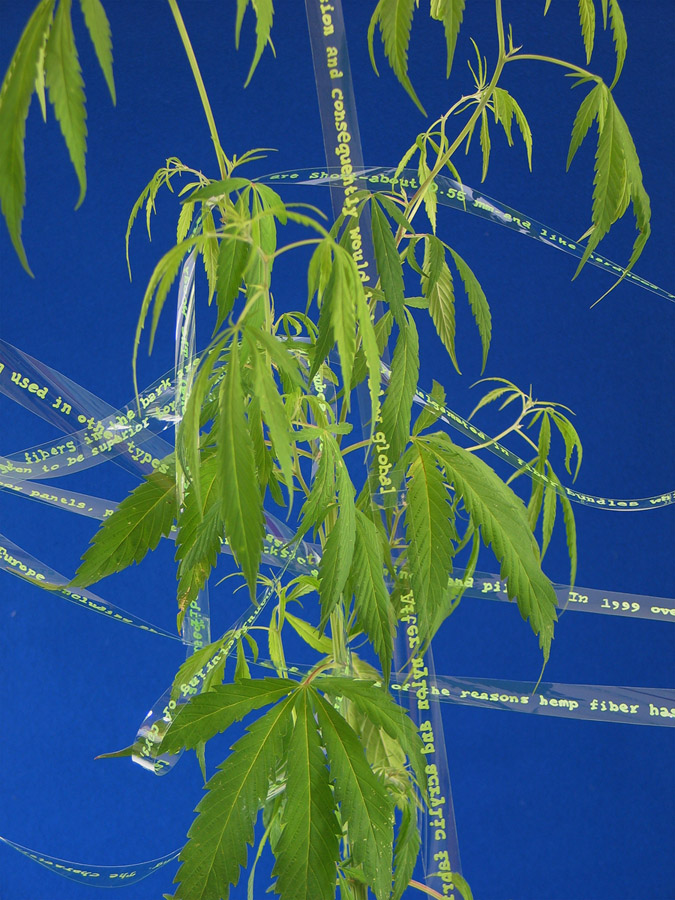Created for the “Weather Report: Art and Climate Change” exhibition
Boulder Museum of Contemporary Art, Boulder, CO
Curated by Lucy R. Lippard

2007 Homeland Insecurity includes artificial industrial hemp plants set in planters at the entrance of the museum. The installation includes audio, which utilizes scientific research made on the subject of industrial hemp. The soundtrack is run through an electronic filter transforming hemp research into a covert, subliminal message. This form of embedding messaging, meant to be concealed from the conscious mind, refers to the mediated political history of industrial hemp in the US. Called subliminal messaging, it is a form of manipulation used as a tool for advertising and political campaigns.
In 1937 congress passed a prohibitive tax on the cultivation of one of the premier renewable resources, due to motives of Hearst Paper Division and Dupont – who fearing competition to their timber and petro-synthetic products sought to disguise industrial hemp as marijuana. In the case of Homeland Insecurity rather than a smear campaign, Kahrl employs factual data to counter the soiled reputation of a crop with an underdeveloped environmental and economic benefit. Similar to distopic satire or a science fiction novel, her aim is to blend fact and fiction such that we question our present reality.

Catalogue:
Weather Report: Art and Climate Change
Lucy Lippard
Boulder Museum of Contemporary Art, 2007, Softcover 125 pages